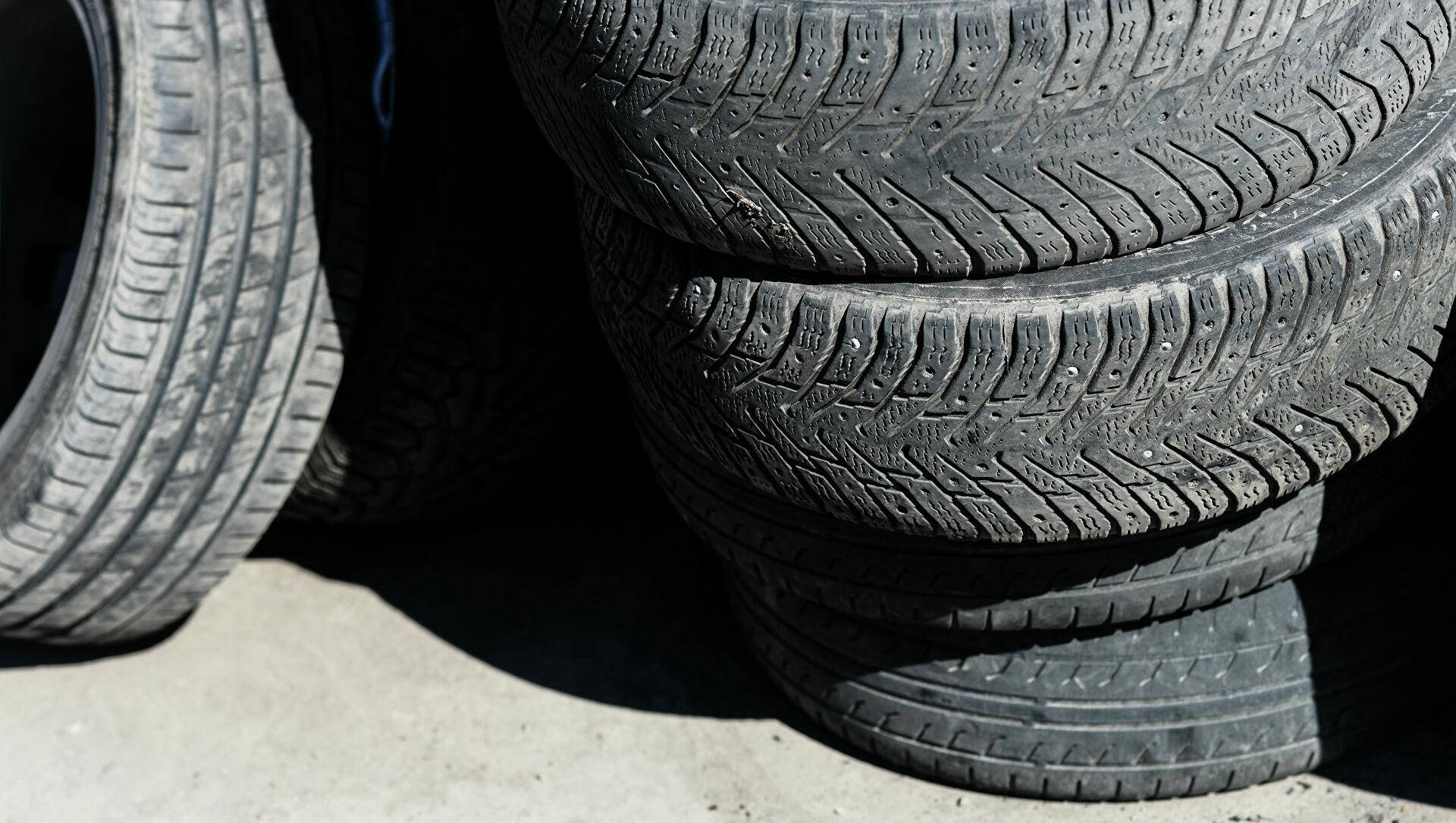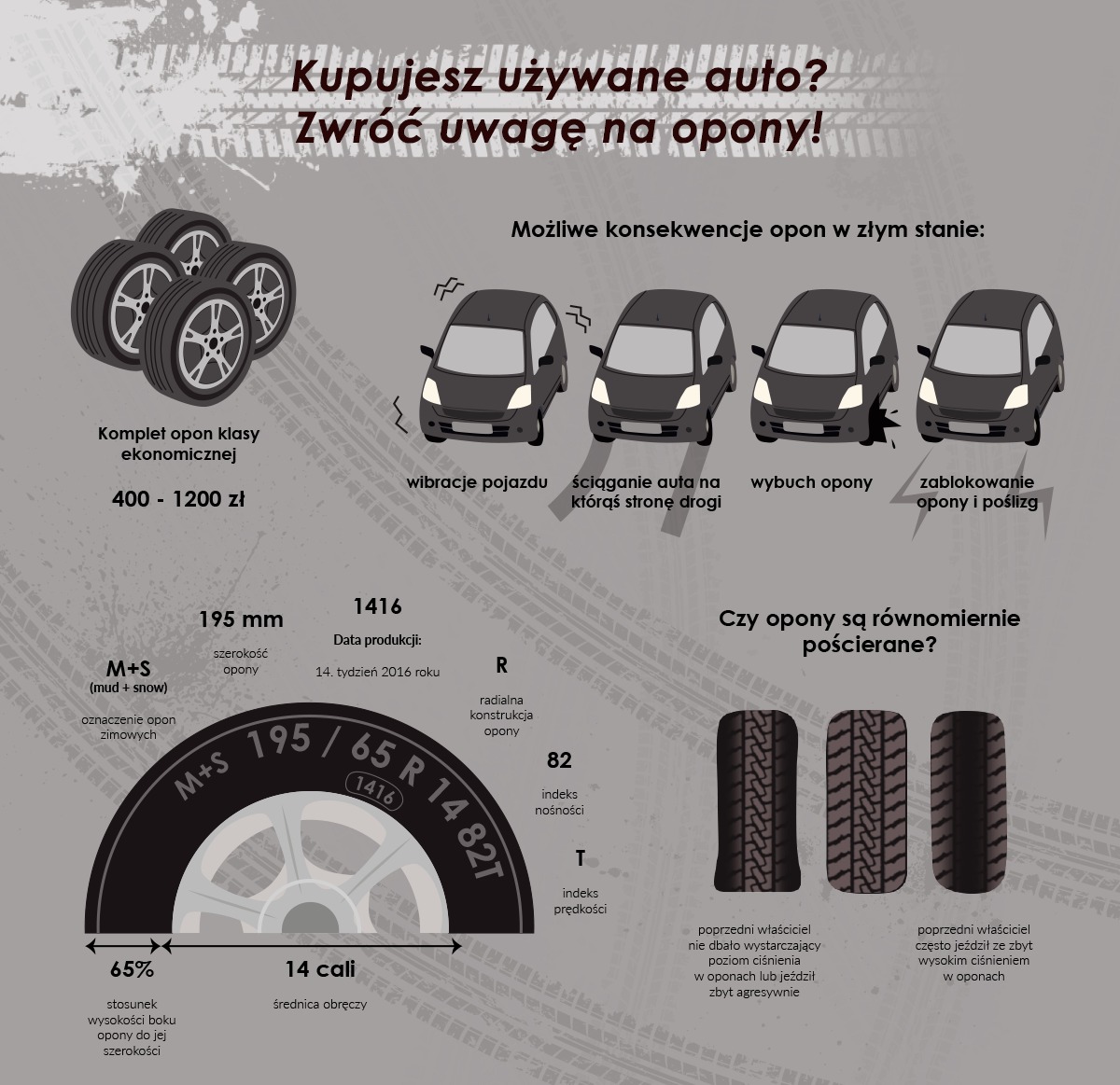
Are you buying a used car? Pay attention to tires!
 What is the best way to negotiate the price of a used car? You must find as many vehicle faults as possible that are not described in the ad, and claim a reduction on this basis. However, we mainly focus on big topics such as engine, clutch or timing, and are casual about tires. Not right!
What is the best way to negotiate the price of a used car? You must find as many vehicle faults as possible that are not described in the ad, and claim a reduction on this basis. However, we mainly focus on big topics such as engine, clutch or timing, and are casual about tires. Not right!
A set of economy tires can cost from PLN 400 to PLN 1200! The latter amount is basically equivalent to valve timing operations on many vehicles that are several years old. The ability to avoid costly expenses is not the only reason to check the condition of the tires on a used car.
It is known that after buying a car in the secondary market, we first of all change filters, oil, pads and, possibly, timing. Tires are definitely not at the top of your to-do list. Meanwhile, it is tires that largely determine our safety. What can happen if the tires are in bad condition? Few things:
• vibrations of the car, which significantly reduce the comfort of the trip and increase the noise in the cabin;
• pulling the vehicle to one side of the road, for example, straight into an oncoming truck;
• a tire explodes with subsequent loss of vehicle control;
• blocking tires and skidding;
See also: Check VIN for free
These are, of course, the most extreme situations. In general, worn tires will "only" cause reduced traction, longer braking distances, and increased risk of skidding.
So, since we don't want to risk our own health and the health of our passengers and the risk of damaging a new car in a stupid collision caused by a skid, it's better to check the condition of the tires before buying! But how to do that?
5 Step Tire Inspection
First of all, we will check whether the seller has correctly selected the size and profile of the car tires. Unfortunately, we still meet people who do not pay attention to such “little things” and put the wrong tires in the car. In extreme cases, it may also happen that the seller simply wants to deceive us by giving us a car with unsuitable tires, and leave the right ones, because they will be useful to him for a new car he has already bought.
How to check if tires fit? In the vehicle owner's manual or on the Internet, you will find information about the tires recommended by the vehicle manufacturer. Next, let's check that everything matches the markings on the tires. In order not to compare incomprehensible numbers, it is worth knowing what they mean. For example, 195/65 R14 82 T is:
• tire width 195 mm;
• the ratio of the height of the sidewall of the tire to its width is 65%;
• radial tire design R;
• rim diameter 14 inches;
• load index 82;
• speed index T;
Pay particular attention to whether the tire protrudes beyond the contour of the vehicle. It's against the law and unfortunately quite common in tuned cars.
Secondly, let's check the correct selection of tires for the season. It is not good to drive on winter tires in summer. And driving in the summer in winter is a hassle. Winter tires will feature distinctive grooves and M+S (mud and snow) markings, as well as a snowflake badge. Rather, avoid all-season tires. They may not cope with icy surfaces, and in summer they will make excessive noise. Here, unfortunately, the principle “when something is good for everything, it is good for nothing” quite often applies.
Thirdly, let's check if the tires are outdated. Their shelf life usually expires 6 years after production. Then the rubber simply loses its properties. Of course, the tires have a production date. For example, 1416 means that the tire was produced in the 14th week of 2016.
Fourth, let's check the tread height. It must be at least 3 mm in summer tires and 4,5 mm in winter. The absolute minimum for summer tires is 1,6 mm and for winter tires 3 mm.
Fifth, let's take a closer look at the tires. Let's pay attention to whether they are evenly rubbed. If we notice that the sides are more worn, this could mean two things. Either the previous owner didn't care about high enough pressure levels, or he drove the car too aggressively. What should I do if the tires are worn unevenly on different sides of the car or along the axles? Possibly a problem with the case or cushioning. If, on the other hand, the center of the tire wears more on the sides, this probably means constant driving with too high tire pressure.
promotional material
